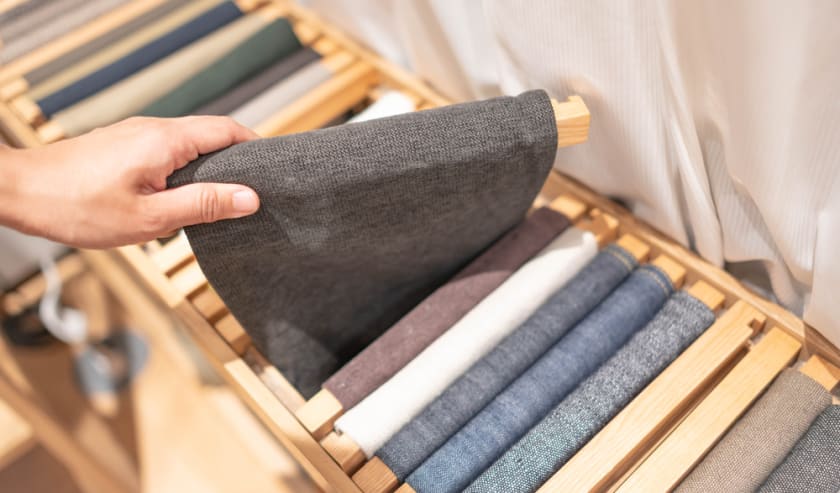How to Replace Real Clothing Samples with Digital Ones without Quality Compromise?



Can we think of a world where clothes are not made of textiles, but pixels have taken over? Gone are the days when fashion designers used to conceptualise the idea and design the dress, then source fabric and sew it. Then the clothing samples were sent to the models to wear, the photographers used to take pictures, the brand representatives, and then the advertising teams used to post them to various magazines, newspapers and hoardings.
In today’s fast-paced world, fast fashion goes out of the racks of retail stores within a month. No one has time to go through the entire supply chain of the fashion world, and the demand for digital sampling is increasing by the day. Instead of sending free clothing samples of the real dress, designers are using 3D virtual sampling and requesting feedback from the models.
The entire fashion industry is transforming from analogue to digital. Amidst this chaos, fashion house owners are worried about how to replace real clothing samples with digital ones without compromising quality. Read further to understand better.
https://unsplash.com/photos/2EJCSULRwC8
1. Invest in a world-class 3D CAD software for 3D virtual sampling
Creating 3D Virtual samples and prototypes has changed the way designers design a dress or shirt. The 3D CAD software options have made it possible to look for design concepts and variants to be sent to the production team before the actual manufacturing of the garment starts. 3D technology has helped fashion designers, technical designers, and textile designers to check out and approve the design before the actual work starts. This saves time and reduces rework. Even the chances of rejection are reduced.
The garments industry is slowly moving into the digital space. It might take a few years for the norms to change because it is an old industry. For centuries, tailors and artisans have been working in the old-fashioned way of drawing the pictures manually and sewing the embroidery manually and the tailors looking at the design on the paper and cutting and stitching the apparel.
Fashion houses need to invest in state-of-the-art 3D CAD (Computer-aided designing) software and if they have multiple branches in multiple countries, they need to ensure the same software suite is used everywhere. Else, there will be a disparity between the departments and units in various locations.
Designing, finalising the design, and presenting the clothing samples virtually is a gruelling and laborious process that takes a lot of time. Then the process of procuring the fabric and accessories like buttons, laces, zippers etc. and finally producing the clothing line takes several months.
The most sought-after technologies used by fashion and technical designers in the fashion industry are Adobe Illustrator, Excel, Photoshop, and many PDM (product data management) and PLM (product lifecycle management) systems.
https://www.pexels.com/photo/person-doing-online-shopping-7667442/
2. 3D virtual sampling for designers
Larger fashion houses and e-tailers have been using 3D virtual prototyping for designing and apparel development for the last couple of years. Since they have the budget and manpower, it is easy for them to adopt this new trend. For the smaller players, they are yet to reach there.
3D virtual clothing samples open a new horizon in the world of garment development and production. The process is not only more efficient and robust, it is extremely less time-consuming.
Manual work of designing and pattern making can be completed quickly with a few strokes on advanced CAD software. This used to take the longest time as the designer had to draw the pictures by hand and colour them to perfection before presenting them to the production team. Corrections to the patterns can be done easily in the digital format without discarding the complete piece. However, with hand-made drawings, if the designer had to change the design of the sleeves, or shoulder frills, he/she had to discard the complete drawing and start a new sketch.
Even if there is any kind of communication gap between the designing team, technical team, production team or the client, it can be quickly corrected via the digital software. It is much easier to send the designs or digital samples to different teams within the organisation or to the client for approval. They need not fax the design anymore, as they used to do earlier.
3D fit technology permits fashion designers to produce and simulate lifelike apparels digitally. This helps them to reduce the wait time to alter the design, colour, fit or stylistic details. If the fabric pattern needs to be finalised, the textile pattern designer can create it and send it to the fashion designer. The fashion designer needs to feed in the textile design and see how it looks on the virtual model for that particular dress, shirt, cloak or scarf.
https://carlings.com/en/ (This is not a free photo source)
3. 3D virtual sampling for technical designers and production
The trick in 3D fit technology is to label the pattern pieces properly and the simulation will work perfectly. The fashion house needs to train everyone to use the software including the garment manufacturing shift leads, quality control professionals and most importantly the tailors. The whole purpose of spending so much money to create a digital sampling process goes to waste if the factories have to create a manual development pattern.
There are many advantages of shifting to 3D virtual specimen selection (sampling) model, as the extensive fit sampling process lead time can be reduced drastically. Integration of 2D models to accommodate 3D avatars will make the lives of many fashion industry workers easy. With 3D simulation, the technical designers can pinpoint and correct fitting related errors digitally. In the manual process, they had to undergo multiple manual fit processes and multiple models had to be employed to check the fits manually.
If these above-mentioned processes are followed meticulously, the process of replacing real clothing samples with digital ones can be achieved without any quality compromises.
Image- https://www.taas.nyc/blog/3d-sampling-expectations-vs-reality (This is not a free to use source)
Benefits of using digital clothing samples
1. Minimal disruption in supply chains
During the global pandemic of COVID-19, the clothing and apparel industries suffered a lot as the supply chains were badly disrupted. Clothing samples had to be sent to models manually to check for fit, as there were multiple travel restrictions. The need to digitise the entire process came up. With the designers moving from a real clothing sample process to a virtual one, the disruption in the supply chains was minimal.
Only the procurement team needed to procure the real materials and the production team needed to work with the real materials. All other processes could be digitised, and this whole change in the process reduced the turn-around-time (TAT) to a large extent.
https://www.pexels.com/photo/laptop-near-wall-with-drafts-in-atelier-with-plants-7147472/
2. Cost saving
If we look at the advancements made by companies like Nvidia and AMD, two major companies manufacturing graphic cards, fashion houses will look into digitising their entire designing to manufacturing cycle for apparels. It saves costs manifolds as the designers need not get real dresses made for the clothing samples which add to the cost for the project.
Free clothing samples can be created using the CAD software and, and no matter the number of revisions needed, it will not add to the cost of wasting the fabric and other materials used to manufacture the dress/shirt/trouser. On an average it used to take six garment samples to seal a deal, and most of the time those samples were thrown in the trash.
Though many fashion designers complained about not having the colour and feel of a real garment, however, if we look at the colour options which the new technologies are capable of producing, they seldom will have a chance to complain.
https://www.pexels.com/photo/person-holding-100-us-dollar-banknotes-2068975/
3. Reducing time in thread dyeing
Using technologies like Twine Solutions’ digital thread dyeing technology, can reduce the time needed in thread dyeing. This technology has the ability to dye white thread into any colour much faster than the traditional methods. Shoe manufacturers especially need much lesser quantities of thread for manufacturing the shoelaces. However, they need to place bulk-orders as the traditional manufacturers will not accept smaller ones. However, using the 3D digital thread dyeing technology, on-demand production of small quantities of 12-15 grams too can be done.
This was one example of the few accessories which are used in the fashion industry. The same can be applied to manufacturing hooks, buttons, leather straps, laces, sequins and a myriad of other accessories needed to produce garments and other fashion items.
https://www.pexels.com/photo/nike-sneakers-with-psychedelic-design-in-close-up-photography-11498948/
Conclusion
So, now since you got an idea about how to replace real clothing samples with digital ones, start with your work. We at Fashinza help fashion brands and independent fashion designers to connect with the most trusted apparel manufacturers.
In addition, we take full responsibility for the entire process from delivery to design, so you focus on digitising your business. If you are planning to launch a new collection or a product line, this is the right time. Since during the time of Navaratri and Akshay Tritiya, along with gold, Indians spend on buying new clothes, your new collection will find new buyers. Even Bengali New Year (Poila Boishakh), Tamil and Malayalam New Year (Vishu Kani) too are on April 14th, 2022. So do not delay and contact us now!



















